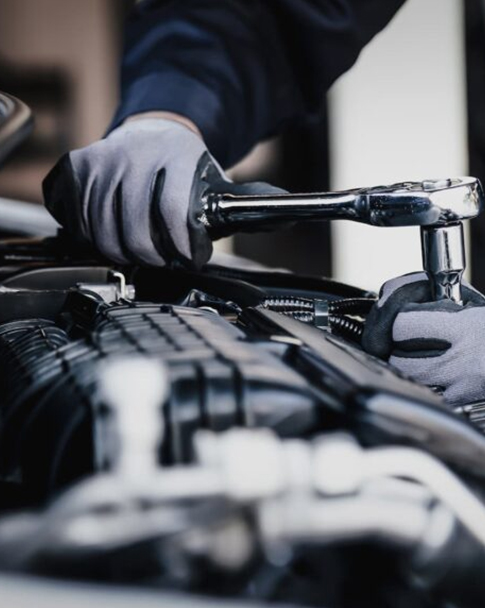Global Supply Chain Resilience in the Automotive Aftermarket: Navigating the New Normal in Auto Parts Distribution
August 21, 2025
The automotive aftermarket supply chain has faced a perfect storm of challenges in recent years—from pandemic-induced factory shutdowns and geopolitical trade disruptions to soaring logistics costs and material shortages. These shocks have exposed critical vulnerabilities in traditional supply chain models, compelling industry players to fundamentally rethink how they source, produce, and distribute auto parts.
With three decades of experience deeply rooted in global markets, Xiamen Fengyu Autoparts has developed a comprehensive understanding of supply chain dynamics. By building a resilient operational framework grounded in agility, foresight, and technological integration, we have not only navigated these disruptions but also strengthened our role as a trusted partner for stability in an increasingly volatile global landscape.
Current Market Realities: Adapting to a Shifting Landscape
Today’s automotive aftermarket operates in a “new normal” where volatility is the only constant. To thrive, suppliers must navigate conflicting trends, material constraints, and digital expectations—all while maintaining quality and reliability. Here’s how we’re addressing the most pressing realities:
The Nearshoring Paradox: Balancing Local Demand with Global Expertise
In the wake of supply chain disruptions, many buyers have turned to nearshoring—sourcing from suppliers in nearby regions—to reduce lead times and mitigate risks. However, this trend has created a paradox: while local sourcing offers proximity, it often struggles to match the quality, cost efficiency, and product diversity that established Asian manufacturers bring to the table. For complex auto parts requiring precision engineering—such as our ISO 14001 - certified ball joints and IATF16949 - compliant steering components—customers still prioritize suppliers with a proven track record of excellence.
At Xiamen Fengyu Autoparts, we’ve bridged this gap by blending global expertise with localized responsiveness. Our advantages in this paradox include:
- 72 - hour response time for all inquiries: Whether it’s a technical question about brake caliper specifications or a rush order request, our dedicated customer service and engineering teams ensure no query goes unanswered for more than three days. This rapid turnaround mirrors the agility of local suppliers while leveraging our global scale.
- Flexible MOQs from 100 to 100,000 units: We understand that aftermarket needs vary widely—from small repair shops requiring a few replacement parts to large fleet operators ordering in bulk. Our production lines are configured to handle both ends of the spectrum, with dedicated small - batch manufacturing cells for low MOQs and high - volume assembly lines for large orders, eliminating the “one - size - fits - all” inefficiency.
- Complete documentation package: In an industry where compliance is non - negotiable, we provide comprehensive material certifications (including RoHS, REACH, and material safety data sheets), third - party test reports (such as fatigue and corrosion resistance results), and traceability records that map each part from raw material to finished product. This level of transparency has made us a preferred partner for European and North American distributors navigating strict regulatory requirements.
Material Availability Challenges: Securing Supply in a Constrained Market
The automotive industry has been hit hard by critical metal shortages in recent years, with alloys like high - strength steel, aluminum, and copper facing prolonged supply disruptions. These shortages have led to price volatility, production delays, and even halted assembly lines for some suppliers. For the aftermarket, where timely access to parts is critical to keeping vehicles on the road, material scarcity has become a make - or - break challenge.
Our proactive approach to material management has allowed us to maintain consistent supply even in tight markets:
- Alternative material formulations: When traditional alloys are scarce, our in - house material science team has developed drop - in replacements that maintain performance. For example, during a 2023 shortage of a specific grade of low - carbon steel, we introduced a recycled steel - aluminum hybrid alloy for control arms that retained 95% of the original strength while reducing material costs by 12%. All alternative materials undergo rigorous testing—including 500,000 + simulated use cycles—to ensure they meet our quality standards.
- Strategic inventory of key raw materials: We maintain a 90 - day buffer stock of critical metals in secured warehouses, with regular audits to prevent degradation or obsolescence. This inventory covers high - demand materials like chromium - nickel alloys for corrosion - resistant parts and titanium alloys for lightweight components, ensuring production can continue even during short - term supply disruptions.
- Advanced forecasting systems: Using machine learning algorithms trained on 15 years of historical data, we predict material demand with 85% accuracy. These systems analyze market trends, seasonal fluctuations, and even geopolitical indicators to anticipate shortages, allowing us to lock in supplies or adjust production schedules proactively. During the 2022 European energy crisis, our forecasters predicted a surge in demand for energy - efficient parts and pre - stocked the necessary materials, avoiding the delays that plagued competitors.
Digital Transformation: Tech - Driven Efficiency in Every Step
In an era where speed and transparency are paramount, digital tools have become essential for supply chain resilience. We’ve invested over $5 million in digital transformation initiatives over the past three years, focusing on technologies that streamline processes, enhance visibility, and empower customers.
Our digital ecosystem includes:
- Interactive 3D part catalogs: Accessible via our website and mobile app, these catalogs allow customers to rotate, zoom, and dissect 3D models of every part—from brake calipers to tie rod ends. Each model includes technical specifications, compatibility information, and even installation guides, reducing the need for back - and - forth communication. Since launching in 2022, these catalogs have cut order errors by 30% and reduced customer onboarding time by half.
- Real - time production tracking: Using IoT sensors installed on production lines and connected to a cloud - based platform, customers can monitor the status of their orders 24/7. They receive automated updates at key stages—raw material intake, manufacturing, quality inspection, and shipping—with estimated delivery times that adjust in real time based on production progress. This transparency has been particularly valuable during peak seasons, as customers can plan inventory management more effectively.
- Automated documentation generation: Manual paperwork has long been a bottleneck in global trade, with errors in invoices, customs declarations, or compliance forms causing delays. Our AI - powered system generates all necessary documents automatically, cross - referencing order details with regulatory requirements for the destination market. For example, a shipment to Germany will automatically include CE certification documents, while a U.S. - bound order will generate EPA compliance forms. This automation has reduced documentation errors by 40% and accelerated customs clearance times by an average of 2 days.
Our Supply Chain Differentiators: Building Resilience from the Ground Up
What sets our supply chain apart isn’t just one technology or process—it’s a holistic approach to resilience that combines redundancy, reliability, and rigor. These differentiators have allowed us to maintain consistency even in the face of global disruptions:
- Dual sourcing for all critical components: For every key raw material and component, we partner with at least two geographically diverse suppliers. For instance, our steel comes from both Japanese and Korean mills, and our electronic sensors are sourced from suppliers in Taiwan and mainland China. This redundancy ensures that a disruption in one region doesn’t halt production. During the 2021 port congestion in Shanghai, we seamlessly shifted orders to our Korean steel supplier, maintaining production schedules without delays.
- 98.7% on - time delivery rate over the past five years: This industry - leading rate is the result of meticulous planning and flexible logistics. We work with 12 global freight partners, including sea, air, and land carriers, to optimize shipping routes based on cost, speed, and reliability. Our regional warehouses in Rotterdam (Europe) and Detroit (North America) stock fast - moving parts, enabling 2 - day delivery to most major markets. For urgent orders, we offer air freight options with guaranteed 72 - hour delivery to key cities.
- Dedicated quality control teams at all production stages: Quality isn’t just checked at the end of the line—it’s embedded in every step. We have QC teams stationed at raw material intake, in - process manufacturing, and final inspection, each equipped with advanced tools like 3D scanners and ultrasonic testers. This multi - stage inspection ensures that defects are caught early, reducing rework and preventing delays. In 2023, our in - process QC checks identified a batch of substandard aluminum before it entered production, saving us from a potential recall and maintaining our delivery commitments.
Future - Proofing Your Supply: Innovations on the Horizon
Resilience isn’t just about surviving today’s challenges—it’s about preparing for tomorrow’s. We’re investing in next - generation technologies to make our supply chain even more agile, transparent, and sustainable:
- Blockchain - based part authentication: Counterfeit auto parts cost the industry $12 billion annually and pose serious safety risks. Our blockchain system will create a tamper - proof digital ledger for each part, recording its manufacturing history, quality checks, and distribution path. Customers can scan a QR code on the part to verify its authenticity, ensuring they receive genuine Xiamen Fengyu Autoparts components. Pilot testing began in early 2024, with full deployment scheduled for late 2025.
- Predictive analytics for demand planning: Building on our existing forecasting tools, we’re integrating real - time market data—such as vehicle registration trends, repair shop activity, and even social media sentiment—into our algorithms. This will allow us to predict demand shifts with 90% accuracy, enabling us to adjust production and inventory levels proactively. For example, the system will anticipate increased demand for winter - ready suspension parts in Northern Europe as temperatures drop, ensuring stock is in place before orders surge.
- AI - driven quality inspection systems: While our human QC teams are unmatched in expertise, AI will add a layer of precision and speed. Computer vision systems trained on millions of part images will identify microscopic defects that might escape the human eye, while machine learning algorithms will flag patterns in defects to prevent future issues. Early trials show these systems can reduce inspection time by 50% while increasing defect detection rates by 15%.
In the new normal of automotive aftermarket distribution, supply chain resilience isn’t an option—it’s a competitive imperative. At Xiamen Fengyu Autoparts, our 30 years of experience, technological innovation, and commitment to partnership have made us a beacon of stability in uncertain times. Whether you’re a small repair shop needing reliable parts or a global distributor seeking a trusted supplier, we’re built to navigate the challenges of today and tomorrow—together.


